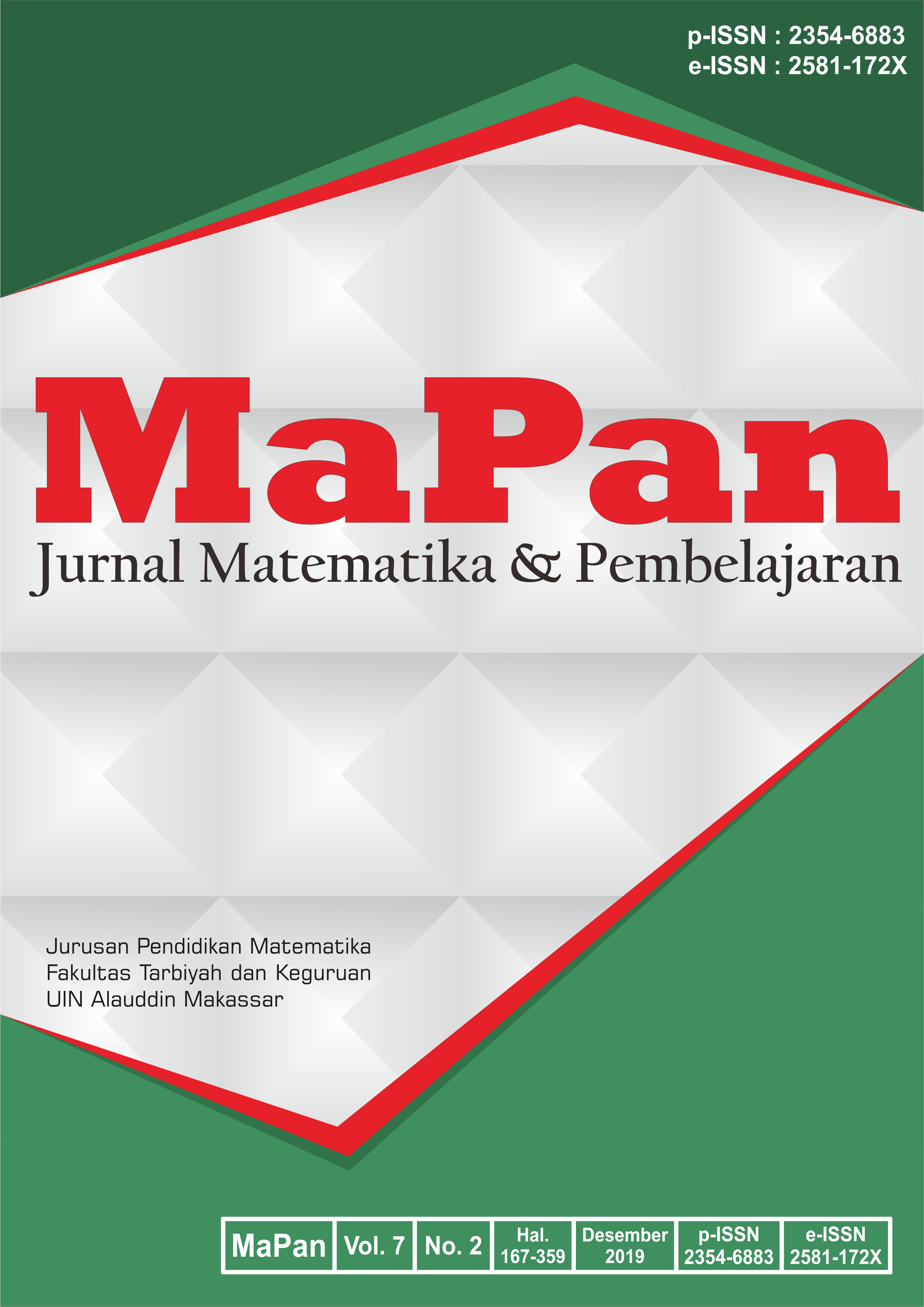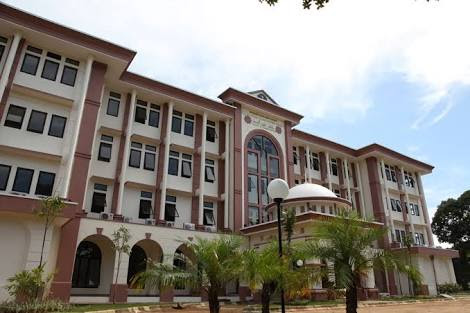MODEL REPRESENTASI MATEMATIS SISWA KELAS IV DALAM MENYELESAIKAN SOAL CERITA
Abstract
Abstrak:
Penelitian ini bertujuan untuk menyelidiki model representasi siswa kelas IV dalam menyelesaikan soal cerita. Representasi merupakan cara yang digunakan siswa untuk menemukan solusi dan mengemukakan ide atau gagasan dari suatu masalah yang sedang dihadapi. Soal cerita digunakan untuk menyelidiki model representasi yang digunakan siswa dalam menyelesaikan permasalahan. Hasil penelitian menunjukkan bahwa siswa lebih memilih representasi numerik dalam proses penyelesaian soal cerita, dikarenakan siswa kebanyakan menggunakan angka. Representasi siswa dalam menyelesaikan soal cerita masih belum maksimal karena hanya ada representasi numerik yang digunakan siswa maka seharusnya guru merencanakan pembelajaran dan memfasilitasi kegiatan dalam proses pembelajaran dengan memberikan latihan-latihan soal cerita sehingga siswa dapat terlatih dalam merepresentasikan penyelesaian soal cerita dengan representasi matematis yang lain dan dapat mengkombinasikannya dengan representasi matematis lainnya.
Abstract:
This research aimed to investigate the representation model of the 4th grade students in solving story problem exercises. Representation is a way that students use to find solutions and express thoughts or ideas of problem faced. The story problem was used to investigate the representation model used by the students in solving problems. The results of the study showed that the students preferred numerical representation in the process of solving story problems because of most of them used numbers. The representation of students in solving story problems were still nonoptimal because there were only numerical representations used by students. Therefore, the teacher should plan learning and facilitate activities in the learning process by providing storytelling exercises so that the students could be trained in representing the completion of story problems with other mathematical representations and could combine it with other mathematical representations.
Downloads
References
BAL, A. P. (2014). The examination of representation used by classroom teacher candidate in solving mathematics problems. Educational Science Theory & Practice, 14(6), 2349–2365. Retrieved from https://files.eric.ed.gov/fulltext/EJ1050592.pdf
Cai, J., Jakabcsin, M. S., & Lane, S. (1996). Assesing students mathematical communication. Science and Mathematics, 96(5), 238–246. Retrieved from https://onlinelibrary.wiley.com/doi/abs/10.1111/j.1949-8594.1996.tb10235.x
Chilmiyah, S. M. (2014). Kemampuan berpikir siswa dalam menyelesaikan soal cerita matematika. Jurnal Pendidikan Matematika STKIP PGRI Sidoarjo, 2(2), 237–247. Retrieved from http://lppm.stkippgri-sidoarjo.ac.id/files/KEMAMPUAN-BERPIKIR-SISWA-DALAM-MENYELESAIKAN-SOAL-CERITA-MATEMATIKA.pdf
Delice, A., & Sevimli, E. (2010). An investigation of the pre-service teacher’s ability of using multiple representation in problem solving success: The Case of Definite Integral. Education Science & Theory Practice, 10(1), 137–149. Retrieved from https://eric.ed.gov/?id=EJ882726
Friedlander, A., & Tabach, M. (2001). Promoting multiple representation in algebra. In Yearbook of the National Council of Teachers of mathematics (pp. 173–185). Reston, Virginia: The Council. Retrieved from https://www.researchgate.net/publication/240637608_PROMOTING_MULTIPLE_REPRESENTATIONS_IN_ALGEBRA
Gerjets, P., Scheiter, K., & Catrambone, R. (2004). Designing instructional examples to reduce intrinsic cognitive load: Molar versus modular presentation of solution procedures. Instructional Science, 32(1–2), 33–58. Retrieved from https://link.springer.com/article/10.1023/B:TRUC.0000021809.10236.71
Goldin, G. A. (2002). Perspective on representation in mathematical learning and problem solving. In Handbook of International Research in Mathematics Education (2nd Ed.) (pp. 176–201).
Hwang, W. Y., Chen, N. S., Dung, J. J., & Yang, Y. L. (2007). Multiple representation skills and creativity effects on mathematical problem solving using a multimedia whiteboard system. Educational Technology and Science, 10(2), 191–212. Retrieved from https://pdfs.semanticscholar.org/d6bb/9c4f430c46a4123bee35b6f33b4922ecaddc.pdf
Jones, B. F., & Knuth, R. A. (1991). What does research say about mathematics? Retrieved from http://www.ncrl.org/sdrs/stwesys/2math.html
Kaput, J. J. (1992). Techology and mathematics education. In D. A. Grouws (Ed.), Handbook of Research on Mathematics Teaching and Learning. New York.
Koedinger, K. R., & Nathan, M. J. (2004). The real story behind story problems: Effects of representations on quantitative reasoning. The Journal of the Learning Sciences, 13(2), 129–164. Retrieved from https://www.tandfonline.com/doi/abs/10.1207/s15327809jls1302_1
Mielicki, M., & Willey, J. (2016). Alternative representations for algebraic problem solving: When are graphs better than equations? The Journal of Problem Solving, 9(1), 3–12. Retrieved from https://docs.lib.purdue.edu/jps/vol9/iss1/1/
NCTM. (2000). Principle and Standards for School Mathematics. Reston, VA: NCTM.
Ozgun-Koca, S. A. (1998). Student’s use representation in mathematics education. In Paper Presented at the Annual Meeting of the North American Chapter of the International Group for the Psychology of Mathematics Education (pp. 1–16). Retrieved from https://eric.ed.gov/?id=ED425937
Polya, G. (1957). How to solve it (2nd ed.). Princeton: Princeton University Press.
Scheiter, K., Gerjets, P., & Schuh, J. (2010). The acquisition of problem-solving skills in mathematics: How animations can aid understanding of structural problem features and solution procedures. Instructional Science, 38(5), 487–502. Retrieved from https://link.springer.com/article/10.1007/s11251-009-9114-9
Surya, E., Sabandar, J., Kusumah, Y. S., & Darhim. (2013). Improving of junior high school visual thingking representation ability in mathematical problem solving by CTL. IndoMS J.M.E, 4(1), 113–126. Retrieved from https://files.eric.ed.gov/fulltext/EJ1078960.pdf
Tambunan, H. (1999). Kemampuan siswa menyelesaikan soal cerita pokok bahasan trigonometri dengan strategi heuristik. PPs UNESA.


